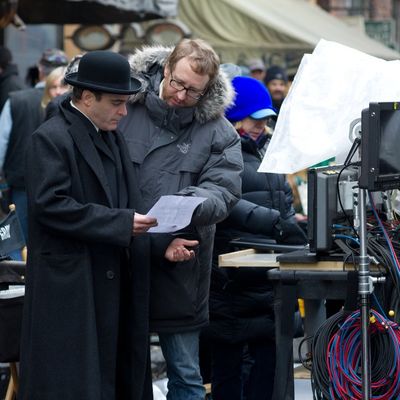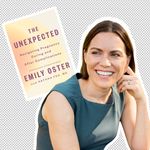
Some of us have been waiting for James Gray’s moment to arrive for the better part of two decades. Of the five films the Queens-born filmmaker has made since 1995, four have screened in competition at Cannes. (The only one that didn’t was his debut, Little Odessa, which won the Silver Lion at Venice.) His latest, The Immigrant, set in 1920s New York, came away from Cannes last year boasting accolades and awards buzz for Marion Cotillard’s tender performance as a Polish immigrant and for Joaquin Phoenix’s haunted turn as the showman/pimp who takes her in. But then it disappeared — the Weinstein Company reportedly wanted cuts and briefly attempted to dump it onto VOD when Gray wouldn’t budge — before finally opening in Los Angeles and New York several weekends ago, a year after its festival premiere.
Troubled releases. Reluctant distributors. A somewhat uninterested public. This happens often with Gray, whose films are feted in Europe — 2007’s We Own the Night and 2008’s Two Lovers were both nominated for Best Foreign Film at the Cesars, France’s answer to the Oscars — but vanish when they come to the U.S. Speaking during a recent visit to New York, Gray, now 45, doesn’t pretend to have any answers, but he seems fairly Zen about it all. “Truth be told, all of the films I’ve made have been pretty mixed in their response,” he says, regarding his films’ U.S. fates. “Of course, I have people who tell me or write me letters and stuff, which is very gratifying later on, but it’s not particularly helpful for the films when they come out.” He seems resigned to the fact that he is one of those directors notorious for being liked by the French while getting ignored at home. “It is what it is,” he shrugs.
The film has garnered some of Gray’s best reviews to date. “It’s as if the ghosts of an older, vanished New York have been freed from the tyranny of faded photographs and allowed, once again, to move, think, and feel, wrote Stephanie Zacharek. Our own David Edelstein wrote that the film “is richer than anything else onscreen right now.”
Could that very richness be the problem? Gray makes a type of movie that barely exists anymore. His films are serious, literate, medium-budget dramas — a vanishing middle ground in an industry increasingly polarized between ginormous tentpoles and micro-budget indies. Many filmmakers in that range have migrated to TV, but that’s not where Gray’s passion lies. His films yearn for the big screen; alongside their carefully constructed stories, they also have old-school stylistic virtues like lush production design (on a budget), expressive camerawork, and intimate close-ups that demand to be seen on a 30-foot screen. “A close-up on a big screen is one of the greatest, most powerful weapons in the history of art, because the camera sees right through you,” Gray says. “That’s why I’ve always felt that an intimate approach, an approach in which the actor is able to convey everything we need to know simply by thinking it, is the most cinematic. Because the camera loves people whose faces are fraught with ambivalence and complexity, and internal struggle and turmoil. That’s what makes an actor or actress worth watching.”
On some level, Gray is best compared to European masters like Luchino Visconti or Bernardo Bertolucci instead of his American contemporaries. There’s an operatic quality to his films — a refusal to shy away from big emotions without cheapening them. He beams at the comparison. “Those guys are my favorite directors! Visconti is an incredibly operatic director, in the best sense. He doesn’t do over-the-top melodrama. Rather, it’s an investment in the emotional truth of the moment, a belief in what those people are going through and an empathy for them.”
That search for emotional truth leads to a certain emotional nakedness, and Gray has been blessed in that regard with some terrific actors. Marion Cotillard is magnificent in The Immigrant — alternately tender and calculating, heartbreaking and relentless. He got two great, understated performances out of Mark Wahlberg, in The Yards and We Own the Night. Gwyneth Paltrow did her best work in Two Lovers, playing a kept woman and recovering addict who strikes up a fraught relationship with her neighbor, played by Joaquin Phoenix.
Then there’s Phoenix himself, who has made four films so far with Gray, coinciding with his own growth from a talented, impulsive young gun to one of the foremost actors of his generation. “He has incredible emotional intelligence, and I think that he’s matured in a way that has been beautiful to watch,” Gray says of Phoenix. “The first time that I worked with him, on The Yards, he was very brilliant, but he was intensely raw. You could do 15 takes with him, and the line reading of the first line would be great in take three and the line reading of the second line would be great in take 12. There wasn’t a lot of craft to what he was doing. But what I have seen over the past 15 or 20 years is an incredible development of his own craft.”
Phoenix’s craft is evident in his performance as Bruno in The Immigrant. “Where he stands in the film is a very uncomfortable place to be,” Gray says. “It was written was very much as a brute, but Joaquin said, ‘I think I should try to con her.’ So, we talked about Fagin from Oliver Twist. His conception was much more interesting and authentic.” And so, when we first see Bruno, helping get Ewa (Cotillard) off Ellis Island and offering her a place to stay, we can tell that he’s shady, but he’s also very demure, well-spoken. As he becomes more outwardly manipulative over the course of the film, he still tries to maintain a veneer of propriety, even indignance – at least, until a final, emotionally pronounced scene in the film’s climax, set on Ellis Island. “Joaquin and I tried to build the performance, really in reverse, from the ending backward,” reveals Gray. “We knew that he would have a moment where he confesses to her, ‘I’m a liar and I hate myself, and I love you but I’m grotesque; I’m nothing.’ So, where’s the best place to start that person?”
The Immigrant, at various points, resembles everything from D.W. Griffith’s Broken Blossoms to Federico Fellini’s La Strada to The Godfather – Part II. Indeed, some critics look at Gray’s films and just see prettier versions of movies they’ve seen countless times before. We’ve seen innocent women taken in by shady impresarios. We’ve seen young men torn between good family girls and wild beauties (the ostensible plot of Two Lovers). We’ve seen brothers on opposing sides of the law (We Own the Night).
But what Gray brings to the films is an emotional complexity that reinvents these elemental tales. When Bruno first brings Ewa home in The Immigrant, she goes to bed with a knife under her pillow. She doesn’t trust this man; we’re not watching a tale of innocence corrupted, but a pas de deux of power, as each alternately manipulates the other over the course of the film. “I didn’t want to make anyone blameless, and that includes her,” Gray says. “He’s a con man, and everything about him is a lie. But I wanted her also to be a little complicit. She will do whatever it takes to survive, and that means doing things that are against her very Catholic nature.” As the film proceeds, what strikes us isn’t Bruno’s gradual duplicity or Ewa’s growing desperation, but rather their growing connectedness: She comes to rely on him, and he on her. “It would be easy to make a film where it’s, ‘I’m naïve and you screwed me up,’” Gray says. “But I think we all are capable of doing things that are less than wonderful in order to survive. I never want the audience to be comfortable – to say, ‘Look at him, he is a bad man.’ We are all a part of the same cauldron.”
That cauldron of desperation is an emotional one, but it’s also a geographic one, too. All of Gray’s films to date have taken place in New York, and milieu matters to him: The city and its boroughs often become a character in the films. In Little Odessa, set among Russian immigrants in Brighton Beach, there’s a grim lyricism to the way Gray plays the empty lots and cold streets off against the warmth of his interiors, where families live crowded into tiny flats. In The Yards, a film about murderous corruption at a railway-car repair company, dark, cavernous train yards become the arena where the film’s moral conflicts play out. We Own the Night is set in the 1980s, and Gray’s camera swoops and charges through the city’s throbbing nightclubs. Even Two Lovers, an intimate, contemporary romance set largely around Sheepshead Bay, has a stirring scene where Phoenix comes into Manhattan one night; the city streets are shot with a kind of magic one no longer associates with today’s New York. It’s a testament not just to Gray’s own love for the city he grew up in, but also to the timelessness of the story he’s trying to tell.
At heart, all these prior films were about families, about the alternately corrosive and redemptive effects they can have. In Gray’s world, generations often live on top of one another. Even when characters are far from their families, they can’t quite shake them. Phoenix’s character in We Own the Night has struck out on his own as a nightclub manager, and has even changed his name, so that his Russian bosses don’t suspect that his father is a police chief, played by Robert Duvall. But the emotional bonds of family still exist, and the film plays on them expertly: In one electrifying, terrifying car chase in the pouring rain, Phoenix helplessly watches in one car as Duvall, the father he once rejected, is shot in another.
Maybe that’s another reason why Gray’s films never seem to find a foothold in the U.S.: Ours is, after all, the country that pioneered the art of shuffling our elders off to rest homes and retirement communities. The idea of generations living among each other, of the specter of parental disapproval, of virtues and conflicts passed down from father to son, may be something Europeans find more compelling than Americans. When I bring up that idea to Gray, he only partly agrees: “I think that American culture often does not represent American life,” he says. “People living with their parents is actually at its highest since the Great Depression. That tells you that the cinema is really not showing the way people actually do live. American movies are aspirational; they don’t represent working people very well.” He cites as an example the feedback he got to Two Lovers, in which Joaquin Phoenix’s character lives at home with his parents. “He’s presumably in his late 20s, but people said to me, ‘Oh, he’s too old for the part.’ And the truth is, he’s probably only too old for the part if you think that everyone makes $400,000 per year.”
In that sense, however, The Immigrant could be considered Gray’s most “American” film to date — despite all that Polish, and despite the fact that it stars a French actress. It’s a film very much about breaking off from the past and leaving the old world behind. Ewa’s memories of her life back home — seen in brief, haunting flashbacks – are of murder and war. At one point, she flees Bruno and finds her aunt and uncle in an outer borough. They comfort her and let her sleep on their couch. But when she wakes up, the cops are there. Her uncle says he’s heard about her “loose morals” on the boat over from Europe. (In reality, she was raped.) Ewa’s uncle and aunt are never heard from again. America will be a new life for her, as soon as she can get her sister out of quarantine at Ellis Island.
Indeed, it’s hard not to feel like The Immigrant signals a kind of conclusion — and maybe a new beginning — for Gray. Two Lovers ended with Phoenix and Paltrow’s characters making an impulsive plan to leave for California; she bailed at the last minute, and he returned to his parents’ home. In The Immigrant, the plan to go West is realized, though Phoenix himself is again left behind. The film ends on a remarkable shot: On one side of the screen, we see Ewa and her sister making their way off Ellis Island, with tickets in hand; on the other side, reflected in a mirror, we see a beaten, bleeding, and damned Bruno, enveloped in darkness and presumably stuck in New York. Is this a good-bye from Gray himself to the city, and the family psychodynamics that have tormented his characters? It’s a devastating final image — but it feels like it’s been shot by a free man.





